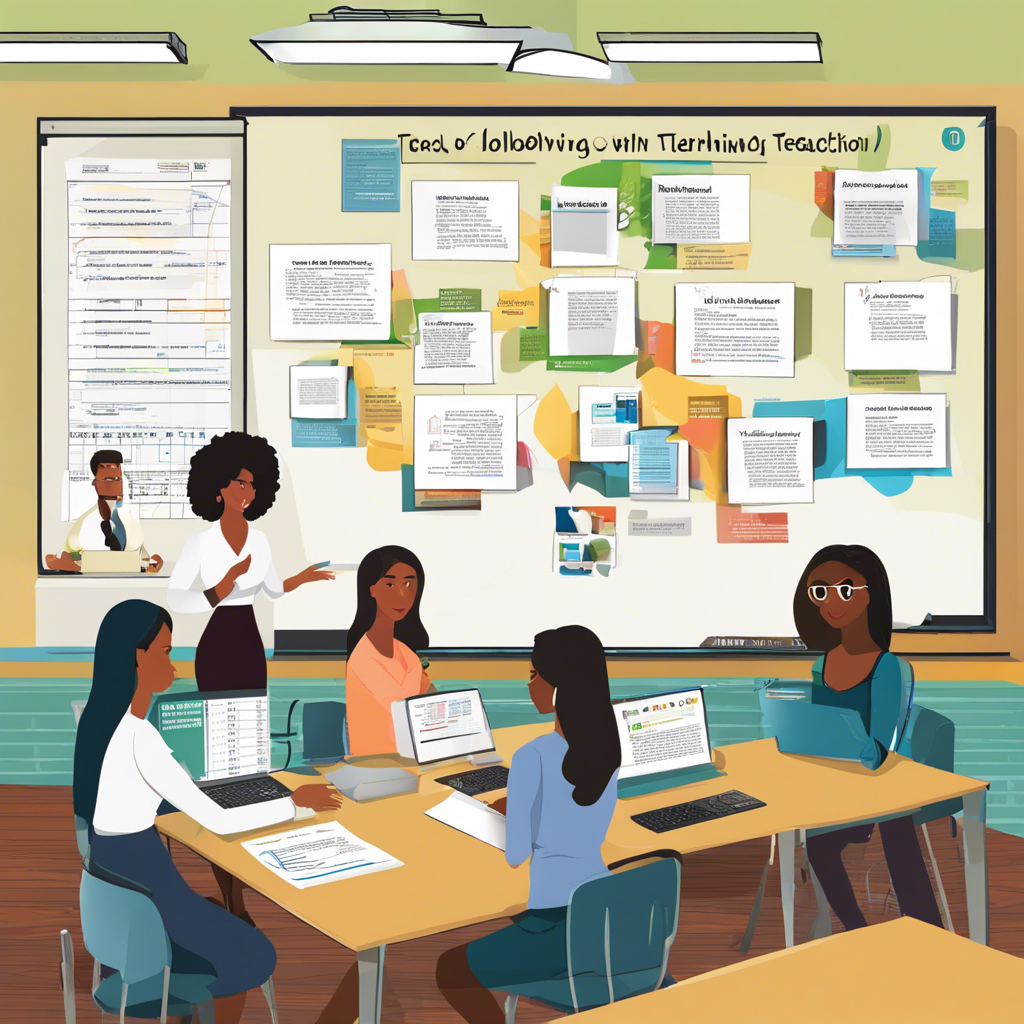Exploring the power of collaboration in teacher education, fostering student-centered learning.
Collaborative learning has become an integral part of teacher education, shaping how future educators develop their skills and instructional practices. This approach emphasizes the power of working together to create a dynamic and engaging learning environment. By fostering a sense of community and shared responsibility, collaborative learning prepares teachers to effectively meet the diverse needs of their students.
In today’s evolving educational landscape, there is a growing recognition that traditional teacher-centered methods may not adequately equip educators to handle the complexities of modern classrooms. As a result, teacher education programs are increasingly embracing collaborative learning as a transformative strategy.
##
Unleashing the Potential of Collaboration
Collaborative learning revolutionizes teacher education by promoting active engagement and critical thinking. When student teachers work in groups, they not only deepen their understanding of educational theories but also develop essential skills such as problem-solving, communication, and teamwork. This approach mirrors the collaborative nature of real-world classrooms, where teachers often work together to design and implement effective instruction.
###
Benefits of Collaborative Learning
**Enhanced Critical Thinking**
: Through collaborative activities, student teachers engage in lively discussions, analyze diverse perspectives, and propose innovative solutions to educational challenges. This process fosters a deeper understanding of the subject matter and encourages creative thinking.
**Improved Communication Skills**
: Collaborating with peers allows student teachers to practice effective communication, a vital skill for building positive relationships with students, colleagues, and parents. They learn to articulate ideas clearly and listen actively to others’ viewpoints.
**Diverse Perspectives and Cultural Competence**
: Collaborative learning groups often consist of individuals from different backgrounds and experiences. Student teachers can broaden their cultural awareness and develop strategies to create inclusive learning environments that embrace diversity.
###
Strategies for Effective Collaboration
Here are some effective practices to enhance collaborative learning in teacher education:
–
Establish Clear Learning Objectives
: Set specific goals for each group activity, ensuring that they align with the overall learning outcomes of the course.
–
Encourage Active Participation
: Create a safe and supportive environment where every student teacher feels valued and encouraged to contribute.
–
Promote Peer Feedback
: Foster a culture of constructive criticism where student teachers can provide feedback to one another, helping to refine ideas and improve performance.
–
Embrace Digital Tools
: Utilize online platforms and collaboration software to facilitate group work, especially in hybrid or remote learning settings.
##
Case Studies and Real-World Examples
Numerous teacher education programs have successfully implemented collaborative learning approaches. For instance, the University of Michigan’s School of Education [^1^] has incorporated collaborative projects into its curriculum, allowing student teachers to work in teams and develop innovative teaching strategies. This approach has resulted in higher levels of student engagement and improved teaching practices.
Similarly, the University of Cambridge’s Faculty of Education [^2^] encourages student teachers to collaborate on research projects, fostering a culture of inquiry and evidence-based practice. This collaborative research not only enhances student teachers’ critical thinking skills but also contributes to the broader educational research community.
##
FAQs
Q: How does collaborative learning differ from group work?
Collaborative learning goes beyond traditional group work by emphasizing the active participation and equal contribution of all members. It focuses on creating a shared learning experience where students teach and learn from one another.
Q: What challenges might teachers face when implementing collaborative learning in their classrooms?
Teachers may encounter challenges such as managing diverse student personalities, ensuring equitable participation, and maintaining a positive group dynamic. However, these challenges can be overcome through careful planning, clear guidelines, and ongoing support.
##
Conclusion: Empowering Future Educators
Collaborative learning is a powerful tool that prepares teacher education students for the complexities of modern classrooms. By fostering critical thinking, communication skills, and cultural awareness, collaborative learning equips future educators with the skills needed to create engaging and inclusive learning environments. As teacher education programs continue to embrace this approach, they empower their students to become innovative and effective teachers, capable of making a positive impact on the lives of their students.
##
References and Further Reading
[^1^]: The University of Michigan’s School of Education: [Collaborative Learning in Teacher Education](https://www.umich.edu/collaborative-learning/)
[^2^]: The University of Cambridge’s Faculty of Education: [Research-Informed Teacher Education](https://www.educ.cam.ac.uk/research-informed-teacher-education/)
##
External Links
–
Collaborative Learning in Action: A Practical Guide for Teachers
[The Power of Collaboration](https://www.edutopia.org/article/collaborative-learning-action-practical-guide-teachers).
–
Evidence-Based Practices in Teacher Education
[A Comprehensive Review](https://www.researchgate.net/publication/283667495_Evidence-Based_Practices_in_Teacher_Education).
–
The Impact of Collaborative Learning on Student Teachers’ Self-Efficacy
[A Research Study](https://files.eric.ed.gov/fulltext/EJ1161800.pdf).
